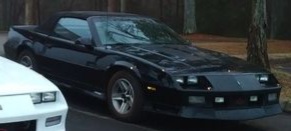Is anyone “drying” a model after airbrushing. I am thinking about an environment that has example given 40 degrees celcius in the hope to accelerate paint drying time. I remember that this is being used in industrial processes
I used to force cure the paint with a warm lamp that I placed near the model. That worked well for many years until one day when my paint mix was a little too “hot” and I placed the lamp maybe 1/2 inch closer than normal.
The whole rear hull collapsed and caved in just minutes later.
Decided after that I would wait for natural dry and cure. I just work on another model project so no hobby time is lost.
A shop assistant I chatted with some years ago told me that he had tried drying/curing a diorama (Tiger tank + lots of plaster groundwork) in the oven set to 50 degrees centigrade (122 degrees F) which was the lowest setting on the oven.
He found out that it wasn’t such a clever idea …
I can just see it in my imagination 
I have a small space heater on my bench for when it’s cold. I’ll occasionally use it to help dry figures once and a while if I don’t feel like waiting for a layer to dry.
Never tried an entire model though.
I use a hand held hair blow dryer on occasion.
This also factors into my choice not to force cure. It may not apply to painting scale models in all cases depending on the paint used but in some cases it could.
Best Self Leveling with paint takes a little bit of time.
When my 91 Camaro Convertible was repainted, body shop owner and painter turned down the temperature in the booth after the car was painted on Friday. The car was left in the cold paint booth over the weekend and holiday. He explained doing so slowed the curing of the paint and allowed it to achieve a superior self leveling. The paint came out nearly perfect, to the point wet-sanding wasn’t required or needed because the paint had self leveled so well. For show car results wet sanding would have been required. However, for much better than factory paint it wasn’t needed.

Same here. I use the low heat setting and keep it moving a few inches away from the part.
Years ago I was overly anxious and attempted this. The model was a T-34/85 and my first go at photoetch. As you said, the rear hull simply collapsed (that’s when I learned how to make tarps out of tissue). Never again have I been so impatient that I’ve tried to ‘force’ dry a plastic model.
Cheers,
C.
That’s a great save with the tarps!
You might try a food dehydrator. It only gets warm and uses a blower(I think) to wick away moisture kind of like a dehumidifier for food. I know some car guys that use them and they’re nuts when it comes to how they paint their cars.
Years ago I took a cue from member MongoMel in the figure forum and built a Hot Box to help speed up the drying time for figures painted using tube oil paints. It is a simple wooden box with a light fixture that depending on the bulb size heats up to about 100 - 130 degrees F. I keep several different wattage bulbs to control temp (40, 60, 75 and 100). I added a motorized revolving turn table that I had laying around and have good luck with curing figures and small kits when needed. Most of the time I use it to keep a model dust free as it slow cures (no heat) for a few days and store in-between build sessions so its safe and sound. (I also keep a thermometer mounted inside so I know the exact temp.)
Not sure how they work but I came across these. There’s 2 different sizes.
I am going to say it depends (not the underpants). Paints optimal temp design is 70 degrees F or about 21 degrees C. Moving away from that when applying the paint reduces the optimal qualities. Humidity is a factor you need to consider. 100% humidity slows drying time. Some paint in the automotive industry is designed to be flashed. some are designed to be heated to help drying or curing. Oil paint just takes forever. The oils just have to do their thing. Drying and curing are also different things to consider. I would limit myself to 80 degrees F and lower the humidity and have the air exchanged frequently. If I wanted a very smooth finish, I would not do anything to speed the drying.
I force dried a m-39 grenade kit last year…
The paint, hairspray weathering, thinner wash all came to nought in seconds…
Well, this collection of horror stories does motivate me NOT to try heating my models up for speeddrying 
But I learnt something else: putting the model in a closed box and drying the air may be a valid alternative?
Altohough my current “strategy” is probably the best: airbrush and put the model in a dust free spce for a week.
The best tool for drying models is patience…

Start building a new kit while the current one dries


Indeed; only be careful that one does not end up with a huge “work in progress” and very little “look what I finished” this way 
